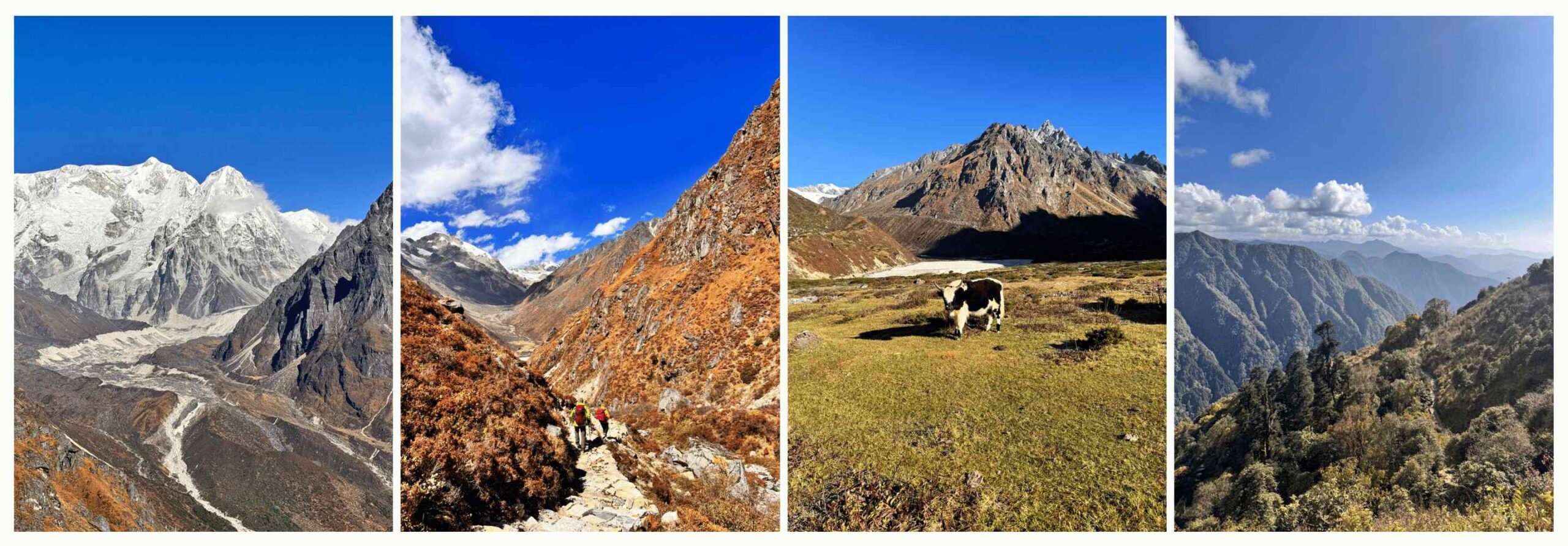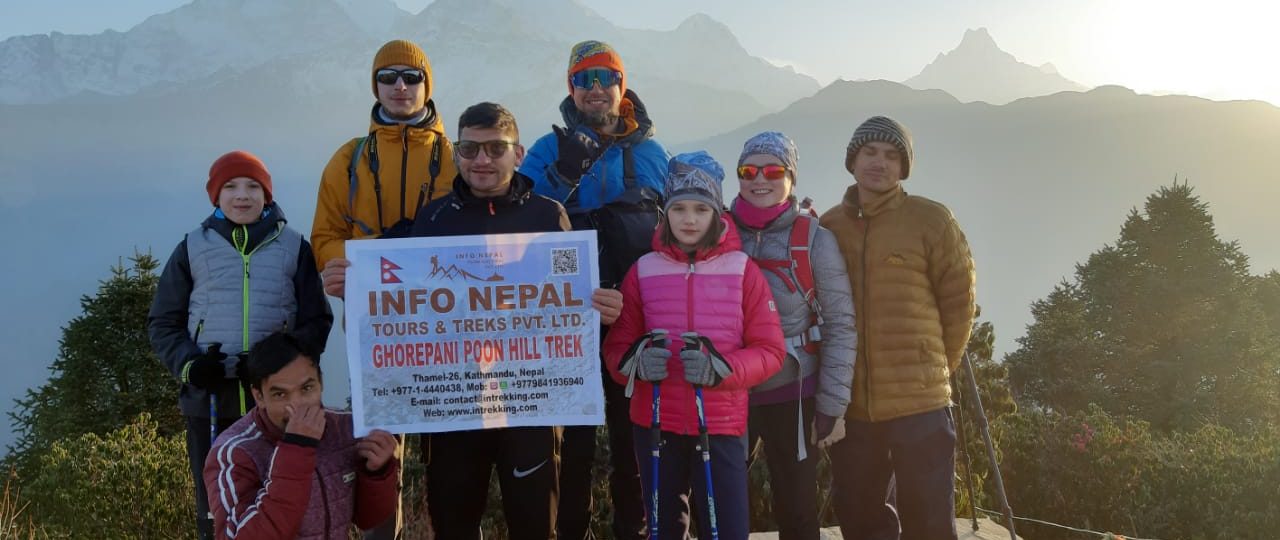
 Written By: Rajesh Neupane
Written By: Rajesh Neupane
Frequently Asked Questions On Kanchenjunga Trek
- What is the best time to do the Kanchenjunga Trek?
- How long does the Kanchenjunga Trek take?
- What is the difficulty level of the Kanchenjunga Trek?
- Is a permit required for the Kanchenjunga Trek?
- What kind of accommodation is available during the Kanchenjunga Trek?
- What is the maximum altitude reached during the Kanchenjunga Trek?
- Are there any special equipment or gear requirements for the Kanchenjunga Trek?
- Is it possible to arrange for porters or guides for the Kanchenjunga Trek?
- What are the possible risks and challenges associated with the Kanchenjunga Trek?
- What are the costs involved in doing the Kanchenjunga Trek?
- Are there any specific fitness requirements for the Kanchenjunga Trek?
- What is the typical itinerary for the Kanchenjunga Trek?
- Are there any opportunities to interact with local communities or experience their culture during the trek?
- What kind of wildlife can be spotted along the Kanchenjunga Trek route?
- How are the weather conditions during the trek?
- What are the evacuation procedures in case of emergencies or injuries during the Kanchenjunga Trek?
- What is clean drinking water and food supplies available along the Kanchenjunga Trek route?
Enquiry Form
Adventure seekers love to travel in the heart of the Himalayas. Trekking in the Kanchenjunga region is among the most stunning and challenging journeys. The Kanchenjunga Trek involves mesmerizing vistas including the third-highest mountain in the world, Mount Kanchenjunga (8,586m), while walking past charming villages, diverse terrain, lush forests, and more.
As for those planning to do the Kanchenjunga Trek, a lot of questions can arise before undertaking the trek. One might wonder about concerns such as the best time to visit, how challenging the trek is, and whatnot.
Here in this blog, you can find some of the frequently asked questions on Kanchenjunga Trek.
What is the best time to do the Kanchenjunga Trek?
The spring and autumn seasons, from March to May and September to November, respectively, are the perfect times to start the Kanchenjunga Trek.
Clear skies and warm temperatures make for ideal weather during these times, which enhances the enjoyment and comfort of the hike. The rhododendron blooms that occur in the springtime further enhance the trek’s natural beauty.
How long does the Kanchenjunga Trek take?
The exact route taken and the trekkers’ speed can affect how long the Kanchenjunga Trek takes. But the whole circuit walk usually takes three to four weeks i.e. 16 to 25 days. Plenty of time is provided for acclimatization and sightseeing along the roughly 200–250 km journey, which goes through remote settlements, green forests, and high mountain passes.
What is the difficulty level of the Kanchenjunga Trek?
Considered a strenuous and demanding journey, the Kanchenjunga Trek is best suited for experienced hikers with a high degree of physical fitness. The trek includes traversing steep mountain passes, trekking through challenging terrain, and experiencing major elevation gains and losses. Since the trek’s highest point is around 5,200 meters (17,060 feet) above sea level, acclimating to the high altitude is crucial.
Is a permit required for the Kanchenjunga Trek?
Indeed, obtaining a permit is necessary in order to trek the Kanchenjunga. The Nepalese government is in charge of the Kanchenjunga Conservation Area, which includes the trek. Before starting the trek, trekkers must get a Kanchenjunga Conservation Area Permit (KCAP) from the authorized authorities. Furthermore, for some parts of the walk, a Restricted Area Permit (RAP) is necessary.
What kind of accommodation is available during the Kanchenjunga Trek?
While on the Kanchenjunga Trek, there are basic but cozy choices for accommodation. Numerous teahouses and lodges managed by the local communities can be found along the trip route.
These types of facilities provide small accommodations with shared bathrooms and beds and mattresses. Meals and hot drinks might also be offered by some of these lodgings. Trekkers may have to stay in tents in the more isolated locations; trekking agencies or guides can make these arrangements.
What is the maximum altitude reached during the Kanchenjunga Trek?
The maximum altitude reached during the Kanchenjunga Trek is approximately 5,143 m (16,870 ft) at the highest point, the Kanchenjunga Base Camp. Trekkers have a great deal of difficulty at this high altitude, which calls for careful acclimatization and physical preparation to reduce the chance of altitude sickness.
Are there any special equipment or gear requirements for the Kanchenjunga Trek?
Yes, because of the difficult terrain and high elevations involved, the Kanchenjunga Trek requires certain hiking gear. Sturdy trekking boots, layers of warm, waterproof clothing, an insulating mat and sleeping bag of superior quality, trekking poles, a daypack, a headlamp or flashlight, and personal first aid supplies are all essentials.
Depending on the path and circumstances, trekkers may also require extra gear for some portions of the journey.
Is it possible to arrange for porters or guides for the Kanchenjunga Trek?
Indeed, hiring knowledgeable guides and porters is strongly advised for the Kanchenjunga Trek, particularly for beginner trekkers or those not familiar with the area. The routes, weather patterns, and cultural customs that local guides are so knowledgeable about guarantee a safer and more rewarding trekking experience. Trekkers can concentrate on the physical challenges of the trek by hiring porters to carry supplies and equipment.
What are the possible risks and challenges associated with the Kanchenjunga Trek?
Trekkers should be aware of the various risks and difficulties associated with the Kanchenjunga Trek. The biggest concern is altitude sickness, which can happen because of the trek’s high altitudes.
It can cause symptoms such as headaches, nausea, and exhaustion; in extreme situations, it can result in potentially fatal complications such as cerebral or pulmonary edema.
Additional dangers include the possibility of getting hurt because of the rough terrain, being exposed to harsh weather, and the region’s remoteness, which can make evacuation challenging in an emergency.
What are the costs involved in doing the Kanchenjunga Trek?
The cost of doing the Kanchenjunga Trek can vary based on a number of factors, including the size of the group, the trekking agency, and the degree of services and assistance needed.
A fully-supported trek including guides, porters, and all required permits can cost between $2,000 and $4,000 per person on average. Usually, this covers lodging, meals, transportation, porters, guides, and permits.
Personal hiking equipment, travel insurance, and any additional services or activities needed for the walk may incur additional charges.
Are there any specific fitness requirements for the Kanchenjunga Trek?
Because of its difficult nature, the Kanchenjunga Trek requires a good level of physical fitness and endurance. Hikers should be ready for extended days of hiking, frequently involving lengths of at least 6 to 8 hours and major elevation gains and losses.
The ascent reaches a maximum elevation of around 5,200 meters (17,060 feet), so prior high-altitude trekking expertise is strongly advised. Strong leg muscles, a healthy heart, and the capacity to wear a daypack for extended periods of time are essential.
What is the typical itinerary for the Kanchenjunga Trek?
A gentle ascent and descent is a standard part of the Kanchenjunga Trek schedule, which facilitates appropriate acclimatization. The walk often begins in Taplejung, where hikers spend the first several days passing through verdant villages and forests.
The path travels through breathtaking scenery, including glaciers, high mountain passes, and isolated valleys, as it gains altitude. To aid in the trekkers’ acclimation to the altitude, rest days and acclimatization hikes are frequently included.
The walk usually reaches its highest point, Kanchenjunga Base Camp, roughly halfway through. From there, it descends via a series of valleys and settlements to the end.
Are there any opportunities to interact with local communities or experience their culture during the trek?
Indeed. Excellent opportunities to engage with local communities and discover their rich cultural legacy are provided by the Kanchenjunga Trek. Trekkers will pass through isolated villages along the journey path, home to different ethnic groups such the Rais, Sherpas, and Limbus.
If the timing is right, trekkers can even take part in local festivals or events, see homes and monasteries, and observe traditional lifestyles. In addition, guides can enhance the cultural experience by offering views into the practices, beliefs, and traditions of these people.
What kind of wildlife can be spotted along the Kanchenjunga Trek route?
The Kanchenjunga area supports a wide variety of plants and animals. Along the way, hikers may get a chance to see a variety of wildlife species, such as the red panda, musk deer, Himalayan tahr (wild goat), and, with luck, the rare snow leopard.
Along with these species, birdwatchers should keep an eye out for eagles blood pheasants, and Himalayan monals. The hike also goes through lush meadows and rhododendron forests, providing an opportunity to see the area’s diverse plant life.
How are the weather conditions during the trek?
Particularly at higher altitudes, the weather during the Kanchenjunga Trek can be quite unpredictable. Trekkers should be prepared for a variety of weather situations, including sunny, pleasant days as well as chilly, windy ones that may include snow and rain. It’s crucial to layer clothes and waterproof equipment appropriately.
What are the evacuation procedures in case of emergencies or injuries during the Kanchenjunga Trek?
Evacuation measures are in place in case of emergencies or injuries during the Kanchenjunga Trek, though they can be difficult because of the isolated and difficult terrain.
In an emergency, trekking companies and guides usually have emergency procedures in place. These may include contacting nearby villages for help or, in more serious situations, setting up helicopter evacuations.
To aid in rescue efforts, guides frequently carry radio communication devices or satellite phones. Trekkers are also encouraged to purchase comprehensive travel insurance that includes medical costs and emergency evacuation coverage.
What is clean drinking water and food supplies available along the Kanchenjunga Trek route?
Along the Kanchenjunga Trek route, food and clean drinking water might be scarce, particularly in the more isolated regions. To purify water from streams and other sources along the route, hikers will need to pack filters or pills for water purification.
You can buy boiling or filtered water in some villages and teahouses. When it comes to food supplies, teahouses and lodges can be found all along the route. These establishments serve simple meals, such as dal bhat (lentils and rice), noodles, and soups.
It is recommended that hikers bring energy bars, high-energy snacks, and their favorite foods to supplement their diet while on the trail.